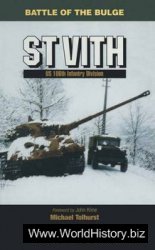Chapter 3 provided site-by-site reviews of the perimortem taphonomy of all 30 assemblages in this study. Those reviews showed some degree of carnivore presence in every site. Their presence was in some instances identified by the recovery of actual skeletal or dental remains of bear, Canis sp.?, carnivore sp.?, fox, hyena, lion, and wolf. In the absence of actual carnivore skeletal and dental parts, their use of and activity in each site was inferred on the basis of tooth marks, which have similarities to bone damage caused by modern domesticated dogs - tooth dints, tooth scratches, end-hollowing, notched fractures, fragment end - and middle-polishing, and embedded fragments. Also, pseudocuts and acid erosion (stomach bones) are attributed to carnivores even though there is a slight chance both could have been produced occasionally by humans. Hence, this chapter discusses carnivore recognition largely in the absence of actual carnivore remains in an assemblage. Thus, uniformitarianism is the tool for believing the effects of past activity, where similar, were caused by similar agencies known in the present.
It is interesting to note that not one of the thousands of pieces of bone examined in this study had a stone or bone weapon fragment embedded in it. This contrasts markedly with what B. Bratlund (1991) found in late Pleistocene reindeer bones recovered at Stellmoor, Schieswig-Holstein. Hence, we have to ask: How much of the bone in our sites represents actual human hunting, and how much represents human scavenging or introductions by carnivores? Like our scarcity of evidence for roasting of game, we similarly have a scarcity of direct evidence for human hunting.
Bone-damaging behavior is not restricted to hyenas. They simply have the capacity to damage bone to complete destruction. As of this writing we have not found a comparative study of bone damage done by various known animals. Carnivores in general damage bone, with larger predators with larger teeth and more powerful jaws (lions, tigers, wolves, hyenas, bears) doing more damage than smaller ones (leopards, foxes, wolverines, martens, others). Non-carnivores can also damage bone. Rodent gnawing is well known, but damage by vultures and deer and other herbivores is less well known. The latter chew horns and other elements to extract minerals and salt. Aside from chewing, other sources of damage by animals include elephant trampling, scattering by birds and carnivores, burrowing by insects, and scratching by crabs. In fact, most large and small land animals die on the ground surface, which exposes their remains to severe and often complete destruction. It is almost miraculous that there is any record of ancient terrestrial life. Even humans, with our unusual behavior of burying the dead, leave many dead on the ground. And humans are well known for their bone-damaging activities.
In an extensive literature review by Gary Haynes (1982:266) dealing with prey carcass utilization, the author focused on the behavior of timber wolves. Haynes allows that prey carcasses are not as fully utilized when hunting is easy, but more so when hunting is difficult. When there is an abundance of sub-adult or older prey, carcass utilization by wolves is minimal. As Table A1.10 shows, perimortem breakage (marrow extraction) is extensive in our assemblages. From this feature alone, we infer that hunting was difficult for humans and carnivores alike in late Pleistocene Siberia.
Richard Klein (1975) proposed a novel approach for distinguishing whether a bone assemblage was the result of human or carnivore activity. This he suggested on the basis of a carnivore-herbivore MNI ratio. His main assumption was that carnivores eat other carnivores more than do humans. We tried this approach, but quite early in our study found that neither it nor MNI used in other ways was going to be helpful for our particular assemblages because they are so severely broken up. Moreover, identifying the number of individuals is a goal different fTom that which we are focused on; namely, defining the bone damage signatures of carnivores and humans based on the perimortem damage differences in carnivore paleontological sites and archaeological sites. As discussed in Chapter 3, there is good evidence for some carnivore activity in most of our assemblages. However, if we use only identified species, then Klein’s carnivore-ungulate ratio would be useless in many cases, i. e., zero actual carnivores/2«? identified herbivores. On the other hand, if we generate a ratio of carnivore-damaged pieces out of the total number of pieces, then we can get a statistically adequate way of estimating the intensity of carnivore activity in any given assemblage.
Approaching the problem in this manner takes away the certainty that a carnivore is in an assemblage, and substitutes an inferred presence. However, as will be shown below, the inference is very strong. Our goal also differs from Klein’s in that we want to identify the degree of carnivore presence in an assemblage of bone that we already know from independent cultural evidence had to some degree resulted from human hunting and butchering activity. On the other hand, as we must admit, it is possible some of what would appear to be carnivore damage may have been due to human bone processing. This being the case, then perhaps the best overall estimate of carnivore activity would require multiple damage features on every fragment. One combination might be that carnivore determination requires that some number of the presumed carnivore damage features be present - dints, acid damage, end-hollowing, for example, or scratches, dints, polishing, or some other combination of two or more damage types believed to be due primarily to carnivores. If we use fragments that have one or more of the damage types generally regarded as indications of carnivore utilization (tooth dints, scratches, end-hollowing, etc.), we find that in Ust-Kova, for example, there was carnivore damage to 11.2% (13 /116) of the assemblage. When mid-fragment polishing and overall polishing are added to this set,
Then carnivore representation rises to 18.1% (21/116). That is, about one-fifth of the total assemblage possesses one or more damage types usually attributed to carnivore chewing. We suspect that this estimate is low, in fact, because carnivores probably can crack bones open without always leaving their diagnostic tooth marks, or, with digestion, not leaving any bone whatsoever (Payne and Munson 1985; discussed in S. J. M. Davis [1987]). In the above percentages, only one damage feature was needed to identify a piece as having been processed by a carnivore. If we require that two damage types be present on a given piece to establish carnivore presence, then there is only a 2.6% (3/116) incidence in the Ust-Kova example. This low frequency strikes us as being too rigorous, but it probably ensures that a true carnivore presence has been identified.




 World History
World History









